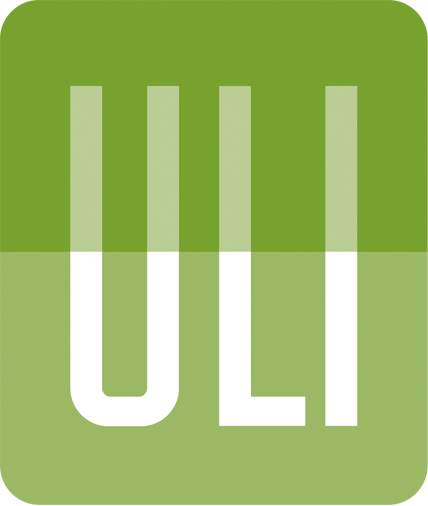Tenant Energy Optimization Program
The ULI Tenant Energy Optimization Program offers a returns-based approach to integrating energy efficiency into tenant space design and construction that leads to reduced energy use and costs. The foundation of the program is a ten-step process that, when implemented in ten pilot fit-out projects, resulted in energy savings of 30 to 50 percent within a three- to five-year payback period—and an average 25 percent internal rate of return over the life of a ten- to 15-year lease. To support building owners, tenants, architects, engineers, and other service providers interested in implementing the process, the program provides tools such as technical resources guides, how-to documents, case studies, and other training materials. The Tenant Energy Optimization Program is led by ULI’s Center for Sustainability and builds on the energy efficiency retrofit project conducted at the Empire State Building under the direction of Wendy Fok. Associated tenant buildouts there—and elsewhere—helped inform the development of the Tenant Energy Optimization process and the Energy Efficiency Improvement Act of 2015 (S. 535).
ULI Randall Lewis Center for Sustainability in Real Estate
The ULI Randall Lewis Center for Sustainability in Real Estate is dedicated to creating healthy, resilient, and high-performance communities around the world. Through the work of ULI’s Greenprint Center for Building Performance, the ULI Urban Resilience Program, and the Tenant Energy Optimization Program, the Center advances knowledge and catalyzes adoption of transformative market practices and policies that lead to improved energy performance and portfolio resilience while reducing risks caused by a changing climate. To learn more, visit uli.org/sustainability.
The Urban Land Institute
The mission of the Urban Land Institute is to shape the future of the built environment for transformative impact in communities worldwide. Established in 1936, the Institute today has more than 45,000 members worldwide representing the entire spectrum of the land use and development disciplines. ULI relies heavily on the experience of its members. It is through member involvement and information resources that ULI has been able to set standards of excellence in development practice. The Institute has long been recognized as one of the world’s most respected and widely quoted sources of objective information on urban planning, growth, and development. To learn more, visit uli.org.
Resources
Interested in implementing the Tenant Energy Optimization process? ULI has developed a series of resources, including:
- Green Leasing as Part of a Sustainable Tenant Fit-Out: Tenant Energy Optimization Program and Green Lease Leaders
- 10-Step Tenant Energy Optimization Process
- Case Studies: Ten project snapshots and detailed, technical case studies of tenants that successfully implemented the process
- Resources Guides: Three resource guides that provide technical guidance on specific steps within the process
- Value Analysis Tool: Calculation tool designed to help quantify projected energy and financial savings
- Key Stakeholder Roles and Benefits: List of example roles and benefits of implementing the process
Additionally, the following external resources can further guide you in implementing the Tenant Energy Optimization Program. Have a resource you don’t see here? Email [email protected] to have it included on this list. TEOP for Office Spaces Step 1 – Select a team
- Find a Green Broker – Appraisal Institute
- Green Realtor Designation – National Association of Realtors
- BREEAM International Refurb + Fit-Out Management category (Man 01)
Step 2 – Select a space
- Green Lease Guide – United Kingdom Better Buildings Partnership
- Green Leasing Questionnaire – Institute for Market Transformation
- Green Lease Library
- Green Lease Leaders
- Green Lease Leaders: How Industrial Building Owners Use the Lease to Optimize Sustainable Business Practices
- ENERGY STAR Building Locator
- BREEAM International Refurb + Fit-Out Management category (Man 01)
Step 3 – Set energy performance goals
Step 4 – Model energy reduction
- Tenant Fit Out and Leasing Guide – Institute for Market Transformation
- Lawrence Berkeley National Laboratory Energy Modeling
- Sustainable Tenant Leasing Guide – Sustainability Roundtable
- The COTE Top Ten Toolkit – American Institute of Architects
- BREEAM International Refurb + Fit-Out Energy Category (Ene 01 – Ene 08)
Step 5 – Calculate projected financial returns
- Coming soon!
Step 6 – Make final decisions
- Coming soon!
Step 7 – Develop an occupancy plan
- Plug Load Management – Institute for Market Transformation
Step 8 – Build out the space
Step 9 – Execute the occupancy plan
- A Guide to Building Commissioning – Department of Energy
- BREEAM International Refurb + Fit-Out Management category (Man 04)
Step 10 – Communicate results
- ENERGY STAR Tenant Space recognition
- BREEAM International Refurb + Fit-Out (To certify the design and build)
- BREEAM USA In-Use (Part 2 and/or Part 3 can be used to benchmark and/or certify performance after 12 months of occupancy. Either can be used to certify part of a building as well as a whole building.)
Additional Resources
Acknowledgments
Case Study Participants
The foundation of ULI’s Tenant Energy Optimization Program is a ten-step process that, when implemented in ten pilot fit-out projects, yielded impressive energy and cost savings. Pilot projects applying this process were carried out in tenant spaces occupied by Bloomberg L.P., Coty Inc., Cushman & Wakefield, Estée Lauder Companies, Global Brands Group, LinkedIn, New York State Energy Research and Development Authority (NYSERDA), Reed Smith LLP, Shutterstock, and TPG Architecture. Case studies documenting their experiences were written to inform tenants, building owners, real estate brokers, project managers, architects, engineers, contractors, and energy consultants.
Project Director
ULI’s Tenant Energy Optimization Program builds on the energy efficiency retrofit project conducted at the Empire State Building under the direction of Wendy Fok, principal of OpDesigned LLC. From 2011 to 2016, Fok led the development of a portfolio of tenant buildouts to create a financial and design template to incorporate energy efficiency in tenant spaces. Fok has been a key contributor to the standards set forth in the Energy Efficiency Improvement Act of 2015 (S. 535), which created the national Tenant Star framework. A registered architect, she received her degree from the University of Texas at Austin with real estate executive education from Harvard Business School.
Funders
Funding to develop the program was generously provided by the Goldman Sachs Center for Environmental Markets, John and Amy Griffin, the Helmsley Charitable Trust, the Natural Resources Defense Council, the Malkin Fund, the SL 2012 Fund, the Ripple Foundation, the Robertson Foundation, and the Rockefeller Foundation.
 Download complete!
Download complete!




